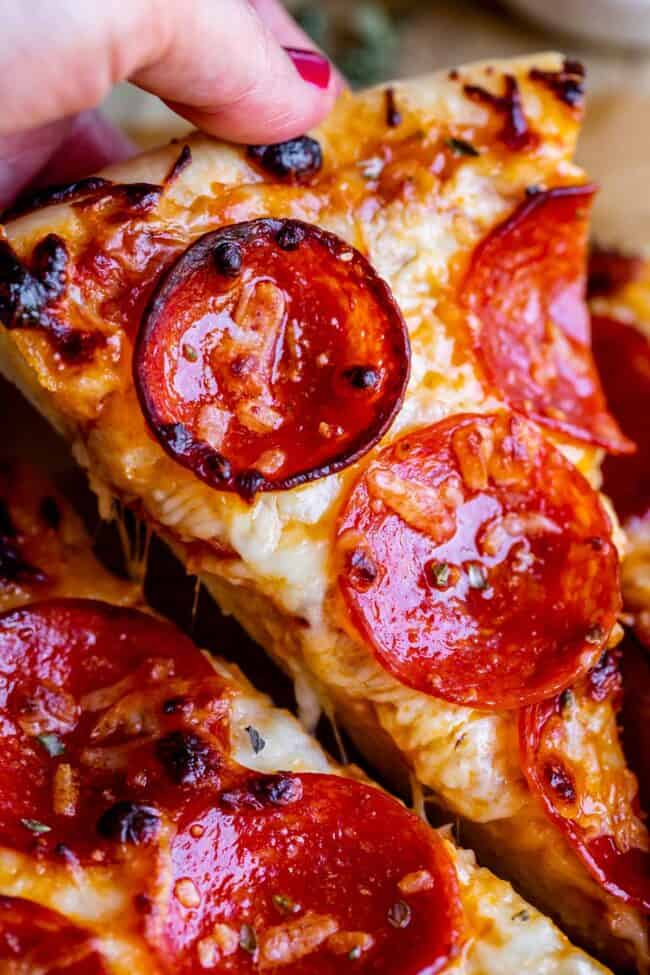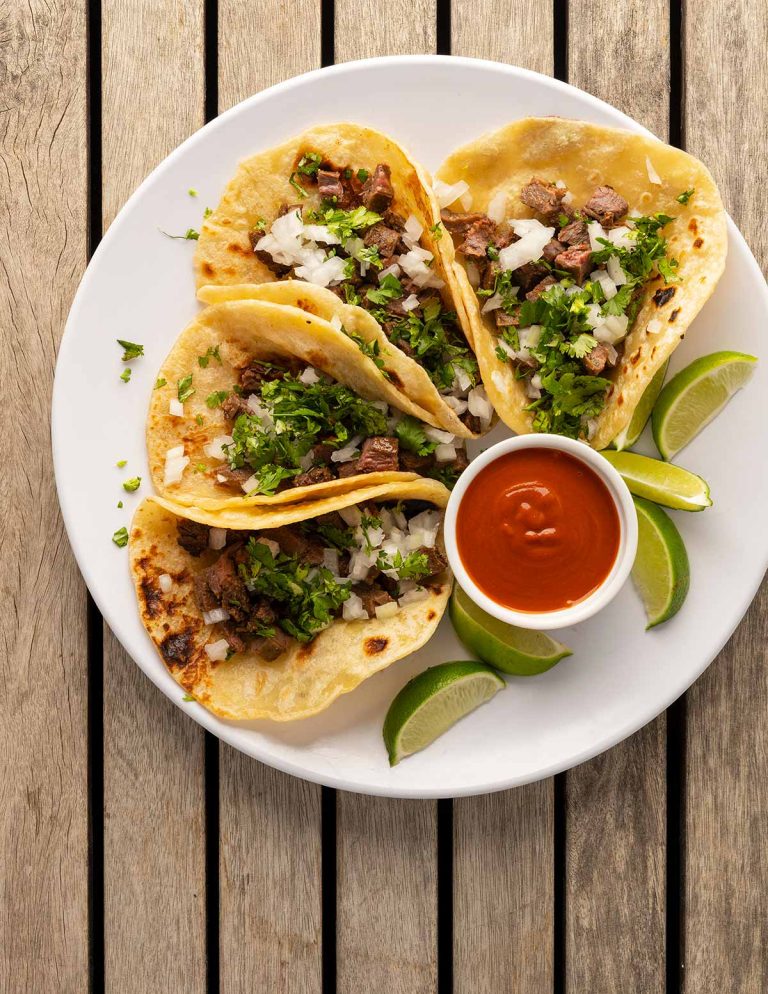Pepperoni Pizza Recipe: Perfect Crust, Sauce, and Topping Tips
Choose the best flour to create the perfect pizza dough. Use high-protein flours like bread flour or 00 flour for a chewy crust. Bread flour contains around 12-14% protein, giving the dough its elasticity. 00 flour, preferred for Neapolitan pizzas, has a finer grind that ensures a lighter crust. Combine these flours if you prefer a balance of chewiness and lightness.
The Importance of High-Quality Pepperoni
High-quality pepperoni is essential for flavorful pizza toppings. Look for pepperoni made from a blend of pork and beef. It typically has a fat content of about 30-35%, creating a perfect crisp when baked. Check labels for preservatives and additives to ensure you’re using natural ingredients. Brands like Hormel and Boar’s Head offer premium options with fewer additives.
Cheese Options: Mozzarella and Beyond
Mozzarella is a staple for pepperoni pizza, but exploring other cheese options can enhance flavor. Whole milk mozzarella melts better and has a richer taste than part-skim varieties. Consider mixing mozzarella with provolone for a tangy twist. Parmesan, known for its sharp flavor, can be added sparingly for an extra layer of taste. Gouda or fontina can be alternatives, providing unique flavors and excellent meltability.
Crafting the Perfect Dough
Mixing and Kneading Techniques
Combine the flour, yeast, salt, and water in a large bowl. Employing the correct proportions is crucial; typically, use 500 grams of flour, 300 milliliters of water, 10 grams of salt, and 7 grams of yeast. Mix until a shaggy dough forms.
Knead the dough on a floured surface for about 10 minutes. This process develops gluten, giving the dough elasticity. Apply a rhythmic push-turn-fold technique, pressing the dough away with the heel of your hand, turning it 90 degrees, and folding it over itself.
Utilize a stand mixer fitted with a dough hook if you prefer a hands-off approach. Set it to medium speed, letting it knead for 8-10 minutes, until smooth and elastic. After kneading, form the dough into a tight ball.
Proofing the Dough: Time and Temperature Tips
Allow the dough to rest and rise in a warm, draft-free environment. Place it in a bowl coated with a thin layer of olive oil, and cover it with a damp cloth or plastic wrap. Let it proof for about 1 to 2 hours at room temperature until it doubles in size.
For a more flavorful crust, consider cold-proofing the dough. After the initial rise, punch it down and transfer it to an airtight container. Refrigerate it for 24 to 48 hours. This slow fermentation enhances the dough’s taste and texture.
Check the dough’s readiness by pressing a finger into it. If the indentation springs back slowly, it’s properly proofed and ready for shaping. Avoid over-proofing to prevent a dense, chewy crust.
These methods ensure a dough that’s both flavorful and has the right texture, setting the foundation for a perfect homemade pepperoni pizza.
Sauce Secrets for Pepperoni Pizza
Homemade vs. Store-Bought Sauces
Homemade tomato sauce offers more control over the flavor profile. You can adjust acidity, sweetness, and spice levels to match your preference. To prepare a basic homemade sauce, use crushed tomatoes, garlic, olive oil, and salt. Simmer until the consistency is thick and flavors are well-integrated.
Store-bought sauces provide convenience and consistent quality. Brands like Rao’s, Pomi, and Don Pepino produce reputable pasta sauces. Choose options low in added sugars and preservatives to maintain a fresh taste.
Flavor Enhancements with Herbs and Spices
Enhancing your sauce with herbs and spices adds complexity. Fresh basil, oregano, and thyme offer aromatic depth to the sauce. Red pepper flakes or cayenne add heat without overwhelming the palate.
For homemade sauces, incorporate dried oregano, garlic powder, and a pinch of sugar for a balanced taste. Fresh herbs should be added towards the end of cooking to preserve their flavors. For store-bought sauces, quick enhancements include a splash of balsamic vinegar or a dollop of tomato paste for richness.
Assembling Your Pepperoni Pizza
Layering Ingredients for Balanced Flavors
Ensure balanced flavors by layering your ingredients methodically. Spread a thin layer of sauce evenly over your dough, ensuring complete coverage. Sprinkle cheese next, using a blend of mozzarella for stretchiness and a touch of Parmesan for sharpness. Arrange pepperoni slices evenly on top to avoid crowding. For enhanced flavor, add optional ingredients like bell peppers, onions, or olives.
Tips for Even Cooking
Achieve even cooking by preheating your oven to 475°F. Use a pizza stone for optimal heat distribution. For a crispy crust, bake your pizza on the lower oven rack. Rotate your pizza halfway through baking. This prevents hot spots and ensures a uniformly cooked pie. baking time should range between 10 to 15 minutes based on your oven’s efficiency.
Baking Your Pepperoni Pizza
Optimal Oven Temperatures
Bake your pepperoni pizza at 475°F (246°C) to achieve a crispy crust and evenly melted cheese. For a conventional oven, preheat at least 30 minutes before baking. Use an oven thermometer for accuracy, as built-in thermometers can be unreliable.
Using a Pizza Stone vs. Baking Sheet
A pizza stone, preheated in the oven, absorbs moisture and provides even heat distribution, resulting in a crispier crust. Place the stone on the bottom rack. If you don’t have one, use a baking sheet, but line it with parchment paper to prevent sticking. A baking sheet won’t get as hot as a stone, so expect a slightly less crispy crust.
Conclusion
Creating your own homemade pepperoni pizza is a rewarding experience that brings the pizzeria into your kitchen. By focusing on high-quality ingredients and mastering your dough preparation, you can achieve a pizza that’s both delicious and customized to your taste. Don’t underestimate the power of a well-made sauce and the right balance of toppings. Preheating your oven and using a pizza stone can make all the difference in achieving that perfect crispy crust. With these tips, you’re well on your way to making a pepperoni pizza that’ll impress your family and friends. Enjoy every bite!






